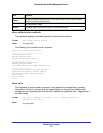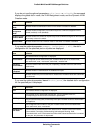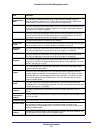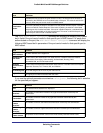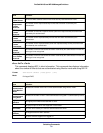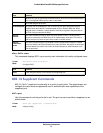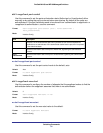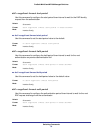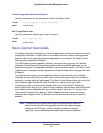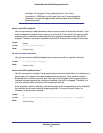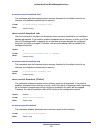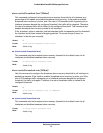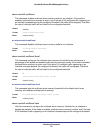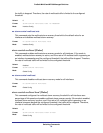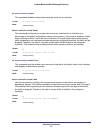
Switching Commands
94
ProSafe M4100 and M7100 Managed Switches
no dot1x supplicant timeout auth-period
Use this command to set the auth-period value to the default value.
Format no dot1x supplicant timeout auth-period
Mode
dot1x supplicant user
Use this command to map the given user to the port.
Format dot1x supplicant user
Mode
Storm-Control Commands
This section describes commands you use to configure storm-control and view storm-control
configuration information. A traffic storm is a condition that occurs when incoming packets
flood the LAN, which creates performance degradation in the network. The Storm-Control
feature protects against this condition.
The 7000 series provides broadcast, multicast, and unicast story recovery for individual
interfaces. Unicast Storm-Control protects against traf
fic whose MAC addresses are not
known by the system. For broadcast, multicast, and unicast storm-control, if the rate of traffic
ingressing on an interface increases beyond the configured threshold for that type, the traffic
is dropped.
To configure storm-control, you will enable the feature for all interfaces or for individual
interfaces, and you will set the threshold (storm-control level) beyond which the broadcast,
multicast, or unicast traf
fic will be dropped. The Storm-Control feature allows you to limit the
rate of specific types of packets through the switch on a per-port, per-type, basis.
Configuring a storm-control level also enables that form of storm-control. Disabling a
storm-control level (using the “no” version of the command) sets the storm-control level back
to the default value and disables that form of storm-control. Using the “no” version of the
“storm-control” command (not stating a “level”) disables that form of storm-control but
maintains the configured “level” (to be active the next time that form of storm-control is
enabled.)
Note: The actual rate of ingress traffic required to activate storm-control is
based on the size of incoming packets and the hard-coded average
packet size of 512 bytes - used to calculate a packet-per-second
(pps) rate - as the forwarding-plane requires pps versus an absolute
Interface Config
Interface Config



